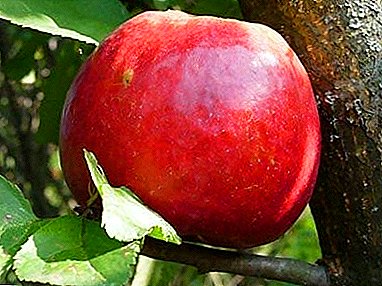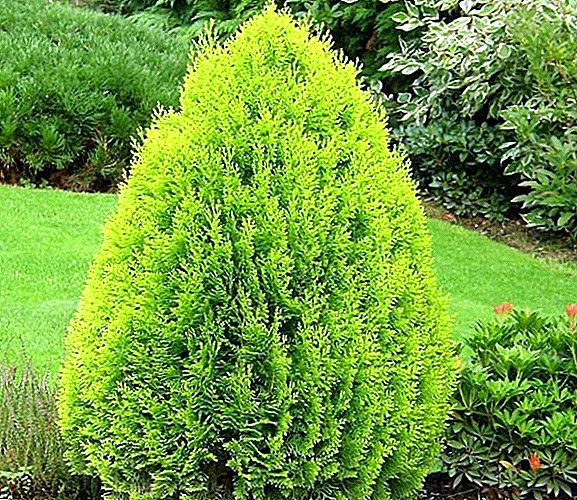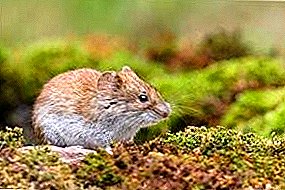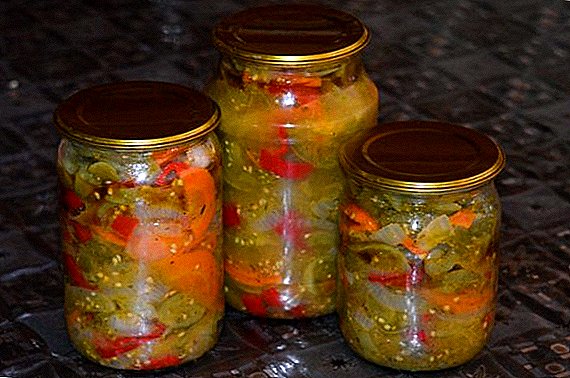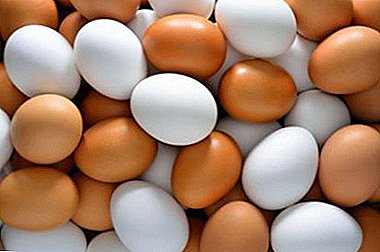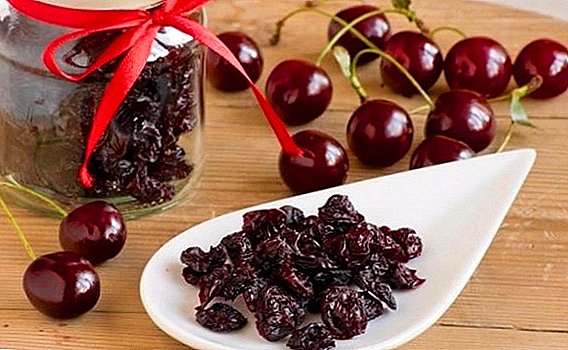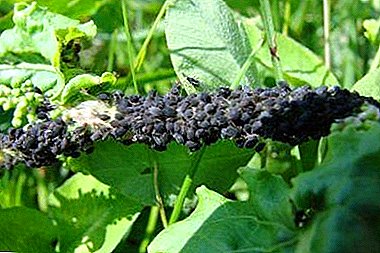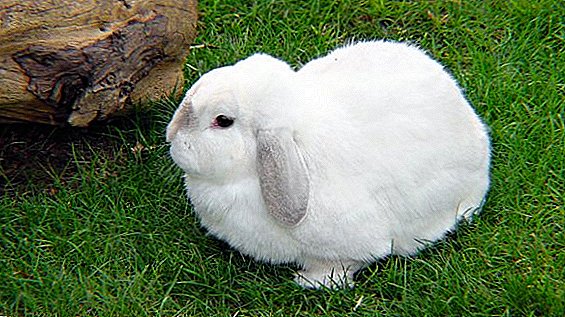 The climate of our region does not allow farmers to keep birds in winter in unheated poultry houses. Every year we have to let chickens to be slaughtered. However, this problem can be solved by building a warm, cozy and comfortable birdhouse on the basis of a polycarbonate greenhouse. Let's learn how to equip an energy-efficient room with your own hands.
The climate of our region does not allow farmers to keep birds in winter in unheated poultry houses. Every year we have to let chickens to be slaughtered. However, this problem can be solved by building a warm, cozy and comfortable birdhouse on the basis of a polycarbonate greenhouse. Let's learn how to equip an energy-efficient room with your own hands.
The advantages of keeping chickens in the greenhouse
Since many poultry farmers have greenhouses, they can be quickly and inexpensively converted into a warm and comfortable chicken coop. Such a construction has a number of key advantages - both for the owner and for the bird.
The content of chickens in the greenhouse allows:
- save useful area on the site, as well as additional funds and materials for the construction of a separate poultry house;
- protect livestock from negative atmospheric phenomena: rain, snow, wind, low temperatures, frost;
- to keep the birds' egg production even in the cold season - daylight penetrating into the greenhouse through its walls, and a warm microclimate in the middle will allow egg laying in chickens and will have a positive effect on their general state of health;
- to get organic fertilizers - the birds behave quite briskly and actively, during their stay in the greenhouse they will thoroughly decorate with a litter a large area of the litter, which in the spring will serve as an excellent compost for the vegetable garden. In addition, a certain amount of poultry waste products will fall on the soil in the greenhouse, which will make it possible to increase the yield of those plants that will be planted in springtime.
Video: growing chickens in the greenhouse
We recommend reading about how to choose the best polycarbonate greenhouse, polycarbonate for its production, as well as get acquainted with the nuances of making a greenhouse with your own hands.
It is possible to grow chickens in a greenhouse, provided that it will not be used for planting crops, year-round. However, in summer, in order for the birds to not overheat, several frames should be removed from the structure and replaced with a reinforced film on rolls.
Did you know? Unlike other birds, for a chicken, the presence of its own, “personal” nest is not important. She can lay eggs in any nest nearby.
How to convert a greenhouse in the chicken coop
The first step to be taken when arranging a winter house for chickens is to create a drawing or project with a graphic arrangement of all the necessary equipment. Such drawings will allow you to rationally distribute the area of the greenhouse, to carry out calculations of materials, to indicate the location of wiring, lighting devices, sockets, etc. 
Step-by-step conversion instructions
Re-equipment of the greenhouse in the chicken coop allows you to build a convenient, practical and comfortable room for wintering birds.
However, before you move there chickens, you should:
- Thoroughly clean the room from dirt, take out the garbage, land, excess inventory.
- Develop a scheme of ventilation and sources of artificial light. In total, the duration of daylight hours should be about 12-14 hours.
- If necessary, take care of the organization of additional heating.
- Equip nests, perches, feeders and drinkers.
- Form a litter on the floor: pour straw or sawdust, make a mud floor.
- Arrange in the middle of small houses made of wood or cages. Such improvised homes will allow the birds to feel even more comfortable, which will have a positive effect on their egg production and general well-being.

Important! It is preferable to pour straw on the floor, because, firstly, it will provide an opportunity to keep warm, and secondly, in the future it will serve as an excellent natural fertilizer for the garden. Hypothermia limbs in birds can lead to colds, and in some cases to death.
When organizing a chicken coop, one should not forget about the calculation of the number of heads per square meter. For one chicken you need at least 0.5 square meters. m square. But you should take into account the breed of bird: for small hens, 0.4 square meters is enough. m, but for broilers - not less than 0.9-1 square meters. m
Warming
A warm microclimate in a greenhouse is one of the main conditions for keeping chickens, which directly affects their productivity. It is necessary that in a polycarbonate hen house there were no drafts and cold, which extremely negatively affect the chicken production and health of chickens, can cause colds.  Thermal insulation of the greenhouse basement In order to ensure maximum thermal insulation, the insulation of the foundation, walls and floor is carried out. Pile or columnar basement is insulated with wooden boards that are fenced around the perimeter and shifted with foam plastic.
Thermal insulation of the greenhouse basement In order to ensure maximum thermal insulation, the insulation of the foundation, walls and floor is carried out. Pile or columnar basement is insulated with wooden boards that are fenced around the perimeter and shifted with foam plastic.
With a tape base act differently:
- digging in the foundation;
- foamed plastic wrapped around the perimeter;
- cover any insulating material;
- covered with soil.
In the middle of the room you need to glue the film and pour the soil. Walls are insulated using polycarbonate sheets, 4 mm thick, sheets of hardboard, chipboard or clapboard. Insulation is being laid between the wall and the new layer - mineral wool, sawdust, foam plastic. Inside, the surface is covered with lutrasil, which will allow to avoid the appearance of condensate.
A thin layer of 1 cm of sand is lined on the floor of the house, then a protective grid is installed, and an electric heating cable with a relay and a thermostat is placed on it. A grid is laid on top of it, then a layer of sand, and tamped with earth.  Warming the floor of the chicken coop If a warm floor system is not possible, it is recommended to use peat, sawdust, straw, and wood chips as bedding. The best option for bedding is peat - it absorbs any liquid 20 times its own weight, thus leaving the limbs of chickens dry and warm.
Warming the floor of the chicken coop If a warm floor system is not possible, it is recommended to use peat, sawdust, straw, and wood chips as bedding. The best option for bedding is peat - it absorbs any liquid 20 times its own weight, thus leaving the limbs of chickens dry and warm.
Familiarize yourself with the choices and uses of fermentation litter for chickens.
The litter layer is changed twice a month completely, or the method of the so-called “non-replaceable litter” is used, when pure material is simply poured onto the old layer as it is contaminated.
The minimum temperature indicators in the hen house should not fall below 10 ° C. Constant ventilation will protect the birds from stuffiness and will be an excellent prevention of respiratory ailments. 
Lighting
The maintenance of chickens in a polycarbonate greenhouse requires the organization of additional lighting, since egg-laying will depend directly on this. As mentioned above, the light day should be about 12-14 hours. As energy sources, it is recommended to use energy-saving lamps: one 20-watt lamp is enough to light 12 square meters. m greenhouse area.
The process of turning on / off lighting fixtures automatic can be done by means of a relay. In this way, a natural effect on the hormonal system of birds for 12 hours will be organized.
The optimal time of the additional light sources are the periods:
- in the morning from 6 to 9 o'clock;
- in the evening - from 18 to 21 hours.

An artificial increase in daylight over 14 hours does not give a positive effect. Moreover, it has a negative impact both on the health of the bird, as it leads to the depression of its psychological state, and on the egg production, exhausting it physically and provoking exhaustion of the body.
Arranging greenhouses in the chicken coop
When everything necessary for comfortable living of birds is equipped in the greenhouse - heating, lighting, ventilation, bedding, etc., it's time to think about the disposition of "everyday items".
Read more about how to make a cage, nest, roost, bird feeder.
First of all, perches will be needed. As the material for their manufacture used poles or timber; length is determined at the rate of 25 cm per hen. They are recommended to mount on the same level so that the birds do not arrange fights for top positions. Place to sleep on perches should be located at a distance of 50-60 cm from the floor. 
Important! Lack of perches, and, as a result, the ability for birds to take off, can cause stress in birds and block their natural instincts.
Also can not do without placing nests. They are made of plywood sheets and filled with hay or sawdust. When making a nest, it is necessary to ensure that all edges are carefully processed and nails do not stick out of the construction. They are located in a darkened greenhouse, at a height of 50 cm from the floor.
So that the birds could quietly "retire" during egg-laying, a partition made of fiberboard or chipboard is placed in front of the nests. Many farmers prefer to install the nest in the form of a single long box, which is divided by partitions into several "places".  For feeding the feathered install feeders. They must have a rather large perimeter so that the birds, if necessary, can eat at the same time and do not show aggression towards the weaker ones.
For feeding the feathered install feeders. They must have a rather large perimeter so that the birds, if necessary, can eat at the same time and do not show aggression towards the weaker ones.
We advise you to read about how to choose the right chicken coop when buying, how to equip it.
We should not forget about the drinkers, which are mounted away from the feeders. Chickens, in any case, behave carelessly and can spill water. And water, in combination with food, can become an excellent breeding ground for pathogenic organisms.
When arranging a greenhouse in a chicken coop, it would be ideal to finish building a walking yard, where birds could freely walk in the fresh air. 
Heating
In order for the birds to feel comfortable and cozy in the room, they should ensure an acceptable temperature, not lower than 10 ° C, and not less than 15 ° C for the hens. There are several ways to heat the house: heat gun, heater, special heater. However, such methods are quite expensive and they are advisable to apply only when the content of elite breeds of chickens.
Learn how to build a chicken coop for the winter, as well as the best way to heat the chicken coop in the winter.
In other cases, it is better to use infrared lamps, which:
- heat the surface, not the air;
- allow to dry litter;
- They have a muffled, non-irritating light that has a calming effect on birds.
10-12 square meters. m square is enough to install a single lamp, 500 watts. They are placed at a short distance from the floor in order to be able to lower and raise the device.  For additional heating using the electric floor heating system, which was mentioned above. It is also recommended to warm the floor with hay or straw, which are safe for the health of the bird and will allow to keep the heat indoors.
For additional heating using the electric floor heating system, which was mentioned above. It is also recommended to warm the floor with hay or straw, which are safe for the health of the bird and will allow to keep the heat indoors.
Important! When keeping birds in harsh climatic conditions with large frosts, heating by means of UV lamps is indispensable. We need to organize a system heating using a stove, convectors, water heating.
Features of the content of the coop
Temperature control is required in the house. It should not fall below 10 ° C, as overcooling of birds has a negative effect on their performance.
Did you know? Laying eggs lay exclusively in the light. Even if the egg-laying time has already come, but in the hen-house it is dark, the chicken will wait for the light to come on or the morning will come, and only after that will the egg be laid.

It is extremely important to keep the house clean:
- clean at least once in 7-10 days;
- every two weeks to completely change the litter on the floor or pour the top dry layer;
- once in two weeks to clean and wash the feeders, drinkers, using a 2% solution of calcined salt;
- clean the litter regularly.
To get rid of the unpleasant smell of litter, you need to make a ventilation system using a conventional exhaust fan. Experts recommend that before settling birds in a chicken coop, disinfect the room by treating the walls and ceiling with a solution of lime or special disinfectants.
For the prevention of diseases carried out such activities:
- maintain optimum temperature;
- immediately infected in a separate room of infected birds;
- control air humidity;
- exclude the occurrence of drafts;
- monitor the quality and condition of the litter;
- keep the feeders clean, drinkers, nests.

For the disinfection of the coop often use the drug "Brovadez-plus."
Once every two months they carry out sanitation of the room.
For this:
- clean the chicken coop from litter, feathers and other contaminants;
- wash the walls, floor, perches with specialized disinfectants;
- disinfect the house with chemical or organic agents with disinfectant properties.
Once a year it is necessary to carry out a “general” cleaning of the chicken coop.
Important! When disinfection is prohibited to use household chemicals, since it can lead to irritation of the respiratory system.
Video: cleaning the hen house
Features of the hens in the hen house
Leaving the birds to hibernate in the greenhouse hen house, they should be provided with regular care, good nutrition. Feeding chickens contained in the greenhouse is no different from the traditional one.
In the diet must be present:
- dry cereal mixtures;
- specialized combined feed;
- wet mash of vegetables, herbs, cereals, feed;
- bran steamed in water.
It will be useful for you to read about how and how much to feed domestic chickens, how to make feed for laying hens, how much feed you need for a laying hen per day, and what vitamins chickens need for egg production.
Cereals can be served dry or soaked in water. Feathers from food waste, chopped fish, cottage cheese, dried herbs, boiled vegetables will not refuse.  The winter menu is recommended to be enriched with microelements and minerals, the source of which can be silage, root vegetables, vegetables - for example, beets, carrots or pumpkin. Calcium deficiency can be compensated by adding chopped eggshell, chalk or limestone to the feed.
The winter menu is recommended to be enriched with microelements and minerals, the source of which can be silage, root vegetables, vegetables - for example, beets, carrots or pumpkin. Calcium deficiency can be compensated by adding chopped eggshell, chalk or limestone to the feed.
A lot of protein and fat contains cake from sunflower seeds, which is also recommended for consumption. In winter, food is given up to four times a day. Chickens should have constant access to fresh, clean water.
To improve the productivity of chickens, meat and bone meal, bran and wheat germ are introduced into their diets.
In cold weather, the water should be heated to a temperature of 15-20 ° C. After the birds finish the meal, water is poured to prevent it from cooling, because cold liquid can lead to colds.
Video: how to feed the chickens in winter so that they carry eggs The main conditions for keeping chickens in the greenhouse are the elimination of drafts and maintaining the temperature not lower than 10 ° C. Only then can we hope for a comfortable wintering of birds and their stable egg-laying.
Learn how to keep chickens in winter, as well as how to increase egg production in chickens at this time of year.
Do not hurry with the onset of cold weather to let the bird for slaughter. If you have an old polycarbonate greenhouse that is idle in winter, it is perfect for keeping chickens.
Polycarbonate is a durable, reliable, heat-saving material, the construction of which is able to protect birds from bad weather and predators, to become a comfortable home for them. Adequate lighting, warming and a balanced diet will allow to save the livestock of chickens and ensure their egg-laying, even in winter.
Reviews from the network





